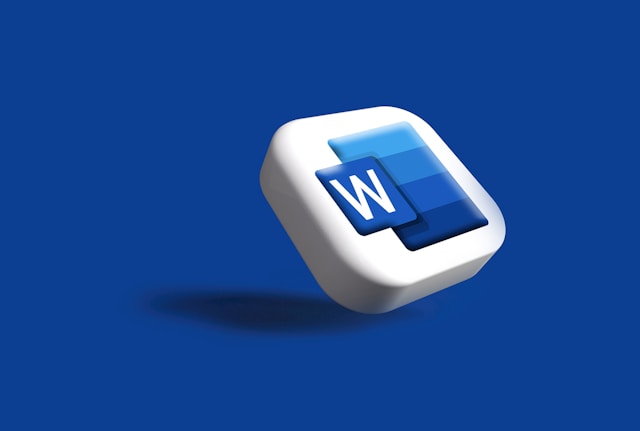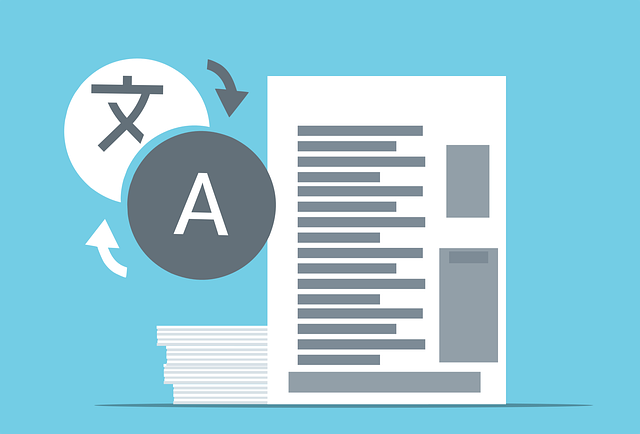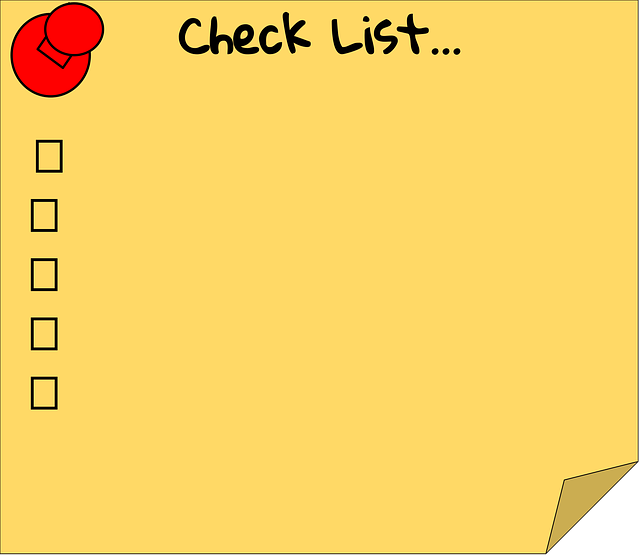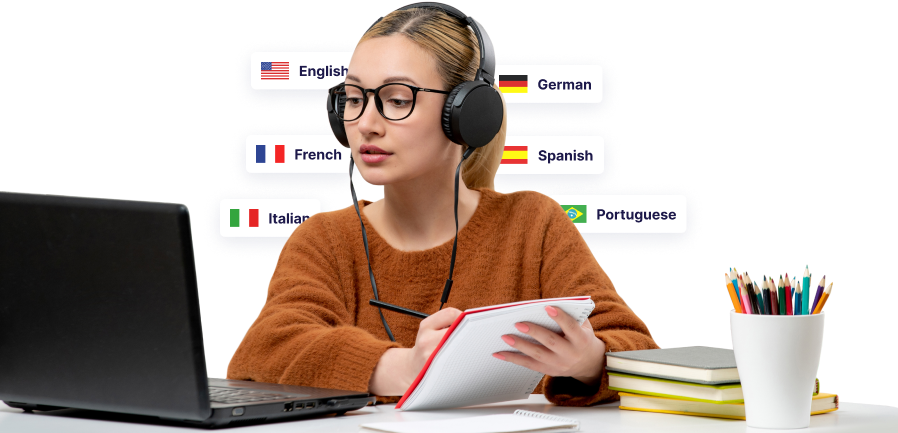L'équipe de Rapid Translate
Les gens ont soit des copies papier, soit des formats numériques de documents à traduire. Pour la plupart des gens, l'envoi, la réception et le travail sur des documents numériques sont moins stressants que la manipulation de papiers. C'est pourquoi les personnes qui adoptent la numérisation posent des questions sur la manière de traduire un document Word.
La traduction d'un document Word suit généralement les mêmes étapes qu'une traduction écrite. Les traductions numériques sont plus acceptables car elles ne posent pas de problèmes de lisibilité.
Par conséquent, si vous êtes bilingue ou multilingue, vous voudrez peut-être traduire vous-même un document Word. Mais est-ce possible ? Découvrons-le !

Table des matières
Puis-je traduire des documents sans faire appel à un professionnel ?
N'importe qui peut traduire des documents s'il possède les compétences linguistiques nécessaires. Cependant, cela ne produira qu'un niveau de traduction de base, qui peut être suffisant, en fonction de l'objectif poursuivi.
Mais il n'est pas nécessaire d'avoir des qualifications professionnelles pour devenir un bon traducteur. Il est possible de traduire des documents sans avoir de diplôme à l'appui. Il faut comprendre correctement la langue source et la langue cible et avoir d'excellentes aptitudes à la communication et aux relations humaines.
En outre, vous pouvez suivre des cours de traduction professionnels et accrédités sur des plateformes d'apprentissage en ligne renommées telles que Coursera. Tout cela vous permettra d'améliorer vos traductions, et vous serez prêt avec de la pratique.
Toutes les tâches ne nécessitent pas de faire appel à des services professionnels. Vous pouvez effectuer vous-même des traductions simples. Il se peut que vous soyez bloqué lors de votre première tentative, mais cela devient de plus en plus facile au fur et à mesure que vous essayez.
Toutefois, si vous avez besoin d'aide, vous pouvez faire appel à des applications de traduction mobiles ou à des sites web tels que Google Translate. Bien qu'il existe plusieurs outils de traduction automatique, Google Translate possède l'un des meilleurs algorithmes.
En outre, il est facile à utiliser. Vous pouvez combiner vos connaissances en matière de traduction avec les suggestions de l'outil pour obtenir un premier jet avant l'édition. Vous pouvez faire des erreurs, alors n'hésitez pas à créer d'innombrables brouillons.
Si vous connaissez quelqu'un qui comprend la langue cible, vous pouvez lui demander de vous aider à relire votre document traduit. Un œil différent pourrait déceler des erreurs non détectées, ce qui vous éviterait de commettre des erreurs coûteuses.

Comment traduire un document dans Word
Si vous vous demandez comment traduire un document dans Word, ce n'est pas difficile. La traduction d'un document Word concerne les certificats et les rapports MS Word qui sont des fichiers DOCX, DOC ou PDF.
Si vous possédez un tel document ou si quelqu'un vous en envoie un pour traduction, voici ce qu'il faut faire.
Commencez par lire et comprendre la copie originale en MS Word. Essayez d'en saisir le contenu, le contexte et le ton.
Microsoft Word est un programme de traitement de texte efficace qui vous permet de traduire l'intégralité de votre document ou une partie sélectionnée. Cet outil dispose également d'une fonction qui vous permet de sélectionner des mots, des expressions, des phrases ou des blocs de texte à traduire.
Suivez donc ces six étapes pour apprendre à traduire un fichier Word :
- Ouvrez votre fichier MS Word et mettez en surbrillance la partie que vous souhaitez traduire.
- Naviguez jusqu'à l'onglet révision et sélectionnez l'option traduction.
- Un menu déroulant apparaît. Sélectionnez traduire la sélection.
- Le traducteur intégré de MS Word détectera et indiquera automatiquement la langue source au-dessus de la première zone de texte.
- Cliquez sur la flèche déroulante au-dessus de la deuxième zone de texte pour sélectionner la langue cible parmi les options disponibles.
- Appuyez sur le bouton d'insertion pour remplacer la partie traduite du texte. Après l'insertion, vous pouvez lire le texte pour en vérifier l'exactitude.

Comment traduire complètement un document Word
Vous pouvez tester le logiciel de traduction Microsoft Word avec une traduction partielle. Mais vous devez effectuer une traduction mot à mot lorsque vous souhaitez travailler sur un document complet. Une traduction complète est donc nécessaire. Voici un bref guide décrivant comment traduire un fichier Word.
Si vous souhaitez traduire un document entier, les étapes sont similaires à celles d'une traduction partielle. La seule différence est qu'après avoir sélectionné Traduire dans l'onglet Révision, vous devez cliquer sur l'option Traduire le document. Cet acte ouvrira une nouvelle section dans laquelle vous pourrez choisir la langue source et la langue cible.
L'outil ouvrira un nouvel onglet de documents contenant la traduction. Vous pouvez l'enregistrer, la modifier et la mettre en forme pour qu'elle réponde aux critères requis. Vous pouvez ensuite exporter ou envoyer votre traduction au destinataire. Si vous utilisez Google Docs, ne vous inquiétez pas, il dispose d'une fonction de traduction efficace que vous pouvez utiliser.

Les institutions et agences professionnelles acceptent-elles les auto-traductions ?
La plupart des institutions et agences professionnelles n'acceptent pas les documents traduits par leurs soins. Bien que l'autotraduction permette d'économiser du temps et de l'argent, elle n'est pas pratique à des fins officielles. Toutefois, si vous avez l'intention de l'utiliser à des fins personnelles, c'est parfait.
Il convient de noter que, outre les auto-traductions, il est risqué d'utiliser des applications et des outils de traduction, car ils sont sujets à des inexactitudes. On ne saurait trop insister sur les inconvénients des erreurs de traduction. Une seule erreur peut gâcher de belles opportunités ou conduire à un rejet.
Vous pouvez utiliser un outil de traduction en ligne et vérifier ses résultats en les éditant, mais ce n'est pas non plus très professionnel. Même les traducteurs officiels s'abstiennent de faire de l'autotraduction, car les institutions percevront des préjugés. Il peut y avoir de légers sous-entendus d'exagération, ce qui peut être une tentative de polir votre image.
En outre, il existe de nombreuses niches dans le domaine de la traduction, ce qui exige le recours à des spécialistes qui comprennent leur secteur d'activité, leur terminologie et leurs systèmes. Par rapport à un traducteur standard, votre traduction ressemblera à une tentative d'un profane.
En outre, les traductions automatiques sont limitées à certaines langues et vos connaissances peuvent ne pas couvrir les nuances culturelles et grammaticales. En outre, les outils de traduction ne peuvent pas améliorer le style et le format des documents pour répondre aux exigences des institutions et des agences.
Par exemple, les services de citoyenneté et d'immigration des États-Unis (United States Citizenship and Immigration Services USCIS) ont des exigences strictes en matière de traduction, qu'une personne ordinaire aura du mal à respecter. La combinaison de tous ces facteurs aboutira à des autotraductions de piètre qualité, ce qui annulera l'option dans les contextes officiels.

Exigences de base en matière de traduction
Bien que chaque institution et agence puisse avoir des exigences différentes en matière de traduction en langue étrangère, il existe quelques règles de base. La première est l'exactitude. Toutes les traductions en langue étrangère doivent être correctes et précises à 100 %. Le traducteur doit rendre chaque mot comme il se doit, sans rien omettre.
Les traducteurs ne doivent rien inclure en dehors du fichier original lors de la traduction. En outre, les traductions doivent être complètes. Les tableaux, graphiques, pictogrammes et autres représentations graphiques doivent donc être traduits en conséquence.
Le traducteur doit respecter le même guide de style, le même format et le même ton. Le langage doit également être le même que dans le document original, qu'il soit formel ou technique.
Une autre exigence essentielle est la concision. Les documents traduits ne doivent pas être inutilement longs, sous peine d'ambiguïté.
Comme pour tous les types d'écrits, il est toujours préférable de s'en tenir à la voix active lors de la traduction. Les traductions certifiées doivent comporter la déclaration de certification ainsi que les coordonnées du traducteur.
De même, les traducteurs doivent prêter serment et signer le jurat devant un notaire pour qu'il soit authentifié.
5 types de traducteurs à engager
Vous vous demandez peut-être ce qu'il faut faire, car les institutions professionnelles désapprouvent l'utilisation de machines et l'auto-traduction. Engagez un traducteur expérimenté pour faire le travail.
En raison de l'existence de plusieurs secteurs d'activité, les traducteurs se taillent une place de choix. Vous devez vous adresser au professionnel approprié pour traiter votre document.
Voici donc cinq exemples de spécialistes de la traduction et le type de documents qu'ils traitent :
- Traducteurs juridiques: Ils traitent des documents vitaux tels que la traduction d'actes de mariage et les procédures judiciaires.
- Traducteurs médicaux: Ils traduisent les dossiers des patients, les étiquettes des médicaments et les ressources pédagogiques.
- Traducteurs d'entreprise: Les traducteurs de ce créneau travaillent sur des contrats commerciaux, des accords, des notes internes, etc.
- Traducteurs académiques: Vous pouvez vous adresser à cette catégorie de traducteurs pour la traduction de vos diplômes, relevés de notes et titres.
- Traducteurs pour l'immigration: Ils traduisent tous les visas, passeports internationaux, cartes vertes, permis de séjour et documents d'immigration.
Si vous ne savez pas de quelle catégorie de traducteur vous avez besoin, une simple recherche vous le dira. Mais pourquoi se stresser quand on peut s'adresser à une agence de traduction renommée pour gérer discrètement ses affaires de A à Z ?
Chez Rapid Translate, nous disposons d'une variété de spécialistes de la traduction capables de traiter plus de 60 paires de langues rapidement et efficacement. Pourquoi apprendre à traduire un document Word alors que vous pouvez faire appel à des experts pour une somme modique ? Contactez-nous si vous souhaitez vous détendre tout en faisant régler vos besoins de traduction. Commandez maintenant et découvrez la puissance d'une communication sans faille dès aujourd'hui !




